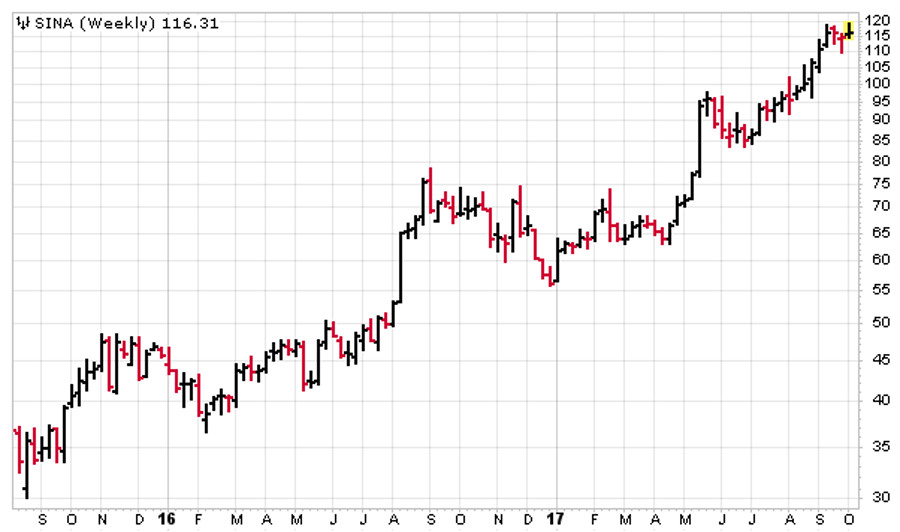Sina Corp. (SINA) scored a major win with its development of the Weibo (WB) microblogging service, which has become the highest profile social media group in China, notes Igor Greenwald, tech expert and editor of Breakthrough Tech Profits.
Weibo is like a combination of Twitter, Facebook, Pinterest and Reddit, incorporating Twitter’s short format (140 characters), Facebook’s rich sharing of words, photos, videos, links and emoticons and the other services’ ability to build groups around common interests.
Get Top Pros' Top Picks, MoneyShow’s free investing newsletter »
Sina Corp. spun Weibo off as an independent company three years ago, and while the deal took a little time to grow wings, Weibo passed Twitter in monthly users and market cap earlier this year.
And since Sina Corp. retained a 46% stake in Weibo (plus a solid voting majority), what’s good for Weibo is very good for Sina Corp.
Weibo contributed 63% of Sina Corp’s revenue in 2016 and that increased to 64% in the second quarter. In its Q2 earnings report on August 9, Sina Corp. reported revenue growth of 47% and earnings growth of 159%.
Analysts predict earnings growth of 109% for 2017 and 35% in 2018. The company also extended its $500 million share repurchase plan until June 2018, with funding coming from cash on hand.
Weibo continues to grow, with monthly active users increasing from 282 million in June 2016 to 361 million in June 2017. And analysts note that Weibo’s growth is a result of a decision made by Sina Corp.’s CEO Charles Chao, who realized that challenging Tencent’s WeChat messaging service was likely to be too big a challenge.
Chao made partnerships with cheaper smartphone brands that were popular outside Chinese cities, seeing that Weibo was loaded on apps of the phones of more than 20 companies.
While Weibo’s system of building online superstars is a great source of followers and income, offering a rich mix of entertainment options for rural users has increased its base far beyond big-city users.
We are recommending buying SINA rather than WB because of its broader base, but also because SINA carries a relatively tamer 49 P/E compared to WB’s 84. SINA is enjoying a surge in institutional sponsorship that began in the first quarter of 2016.
SINA has been through plenty of ups and downs over the years, but since bottoming at 30 in March 2015, the stock has been in a decided (if volatile) uptrend. The company is always vulnerable to sanctions from the Chinese government if it allows controversial, subversive or offensive material to be posted.
And despite having thousands of monitors keeping an eye on content, something annoying to the government will occasionally get through, resulting in fines or restrictions on access.
But SINA, which started its most-recent big run from $93 to $119 in late August, has now bounced back from a correction to $110 on September 25. The slight weakness in recent days looks like a perfect invitation to buy.
Subscribe to Paul Goodwin's Cabot Emerging Markets Investor here…






















